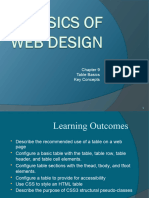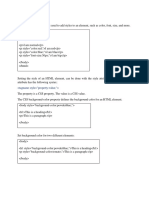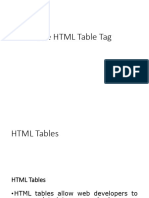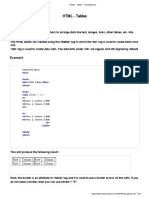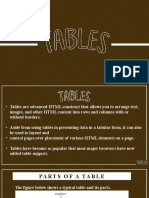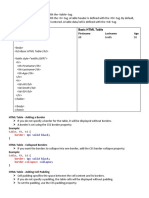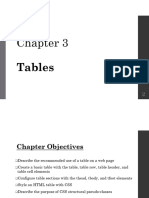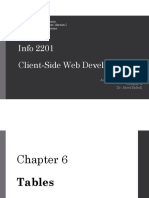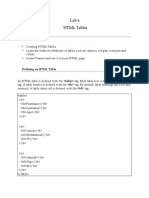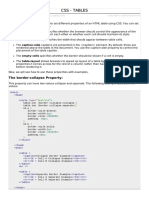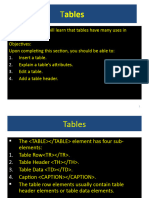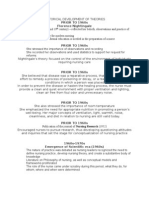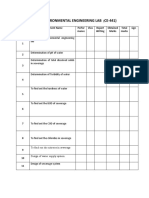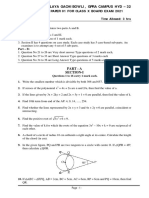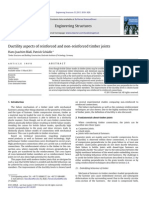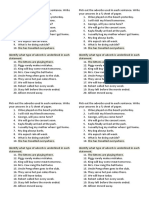0% found this document useful (0 votes)
77 views21 pagesCSS Table Styling Guide
This document discusses using CSS to style HTML tables. It covers properties for setting table width and height, horizontal and vertical alignment, padding, borders, hover effects, striped rows, background colors, and responsive designs. Hands-on examples demonstrate basic table styling with CSS including borders, striping, hover, and captions. The document provides reference to additional CSS table properties like border-collapse, border-spacing, empty-cells, and table-layout.
Uploaded by
Aung HtutCopyright
© © All Rights Reserved
We take content rights seriously. If you suspect this is your content, claim it here.
Available Formats
Download as PPTX, PDF, TXT or read online on Scribd
0% found this document useful (0 votes)
77 views21 pagesCSS Table Styling Guide
This document discusses using CSS to style HTML tables. It covers properties for setting table width and height, horizontal and vertical alignment, padding, borders, hover effects, striped rows, background colors, and responsive designs. Hands-on examples demonstrate basic table styling with CSS including borders, striping, hover, and captions. The document provides reference to additional CSS table properties like border-collapse, border-spacing, empty-cells, and table-layout.
Uploaded by
Aung HtutCopyright
© © All Rights Reserved
We take content rights seriously. If you suspect this is your content, claim it here.
Available Formats
Download as PPTX, PDF, TXT or read online on Scribd
/ 21









